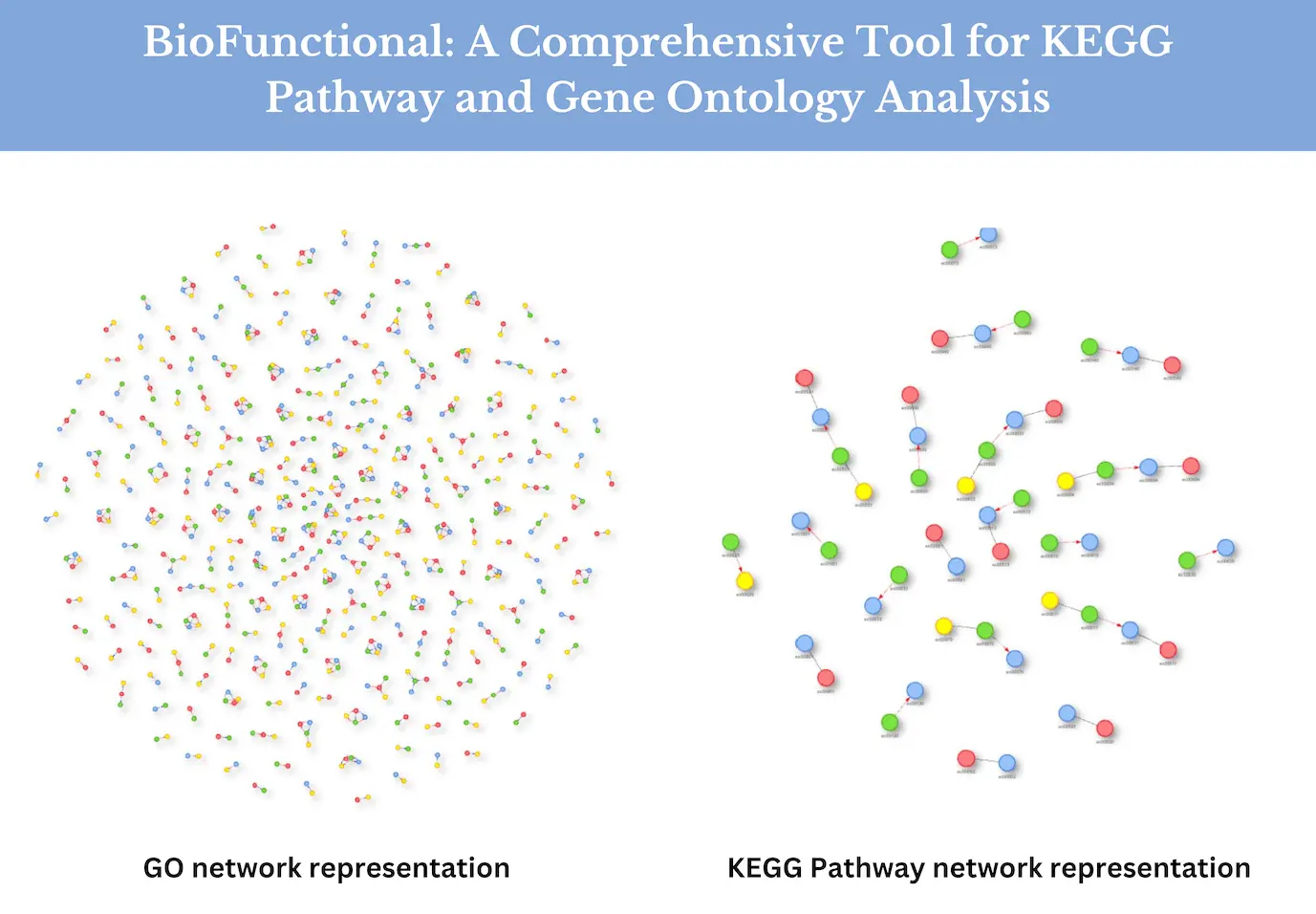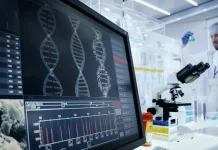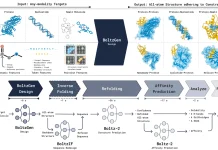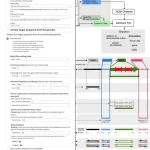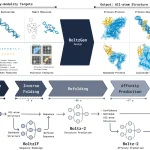In the field of biological research, understanding the relationship between different biological components and their function is complicated. Functional analysis, a part of computational biology, actually sheds some light on the relations between things. Yet, the steps of taking functional expression data and interpreting and visualizing them can be quite unwieldy and lengthy. To meet this challenge, a team of scientists from the University of Barcelona worked on BioFunctional, a sophisticated software application that aims to facilitate and improve the functional analysis of KEGG pathways and Gene Ontogeny.
BioFunctional was created by Alejandro Rodriguez and Antonio Monleon Getino, researchers from the Section of Statistics within the Department of Genetics, Microbiology, and Statistics at the University of Barcelona. They understood the demand for a user-friendly tool that could provide detailed functional information about biological data and how cumbersome it is to locate specific biological data in such a tool and thus acknowledged the need to design an application that could perform complex analyses and produce simple results.
Key Features of BioFunctional:
BioFunctional offers a range of features that make it a valuable asset for researchers in the field of bioinformatics:
Interactive Visualization: Users may construct and interact with networks that display relationships of different groups and ontologies between two or more entities. Such visualization helps to effectively interpret the complicated relationships and patterns of the items present in the data set analysis.
Hierarchical Analysis: BioFunctional allows users to recover evolutionary information for KEGG pathways and Gene Ontologies. In this manner, hierarchical analysis makes it possible to comprehend the systematics and assemblage of whole biological entities.
Efficient Processing: To avoid wasting precious resources and time running analyses, the app takes advantage of large datasets through the use of parallel processing. This greatly shortens the time needed for processing, and consequently, the time needed to derive insights is reduced.
Intuitive Interface: The interface of BioFunctional is simple enough for all types of researchers, regardless of the degree of their technical know-how. Easy-to-use app design provides users with a simple way to search for information and analyze the data in detail.
How BioFunctional Works:
BioFunctional is more than a tool; it is a sophisticated app that facilitates and integrates functional studies of KEGG pathways with Gene Ontologies. It applies data manipulation and web scraping to search for relevant information embedded deep in online databases and carry out a more elaborate analysis.
The workflow of BioFunctional can be divided into the following major steps:
Data Pre-Processing
- Input Data: The user uploads an informative dataset containing either gene expression or any other parameter.
- Data Cleaning: The application has been developed to not only allow for but also conduct significant filtering and cleansing of the data so as to prevent any inconsistencies, errors, or missing values from potentially affecting analyses.
- Data Standardization: Standardization of data has been embraced in this process to ensure compatibility with subsequent steps and to facilitate comparisons.
Differential Expression Analysis
- Comparison: The app compares different experimental groups (e.g., control vs. treatment) to identify genes or proteins that are differentially expressed.
- Statistical Analysis: To determine statistical significance, BioFunctional implements statistical testing such as t-tests and ANOVA, depending on the nature of the comparison between groups and the number of groups under consideration.
- Multiple Testing Correction: In efforts to guard against the potential of expanding the false discovery rate, BioFunctional has included relevant multiple testing correction methods (for instance, the Benjamini-Hochberg correction).
Genetic Set Enrichment Analysis (GSEA)
- Gene Set Definition: The app classifies the genes according to their biological functions, using gene sets that have been defined in advance, like KEGG pathways, Gene ontology terms, and so on.
- Enrichment Score Calculation: GSEA enriches gene sets with differential expression genes over or underrepresented in a gene set and calculates enrichment scores for such gene differences.
- Statistical Significance: By using a permutation test or other appropriate methods, the app determines the statistical significance of the enrichment score.
Ancestry Analysis
- KEGG Pathway Ancestry: BioFunctional tries to map the hierarchical relationship between KEGG pathways to get a bigger biological picture of the entities. This involves identifying parent pathways and their corresponding subpathways.
- Gene Ontology Ancestry: The app also analyzes the hierarchical structure of Gene ontologies to determine the ancestral relationships between different terms. This aids in appreciating the higher levels of biological activities that genes may be associated with.
Web Scraping and Data Extraction
- Database Access: BioFunctional uses web scraping to retrieve the relevant materials available in online databases such as KEGG and QuickGo.
- Data Extraction: The app retrieves information on KEGG pathways and terms of the Gene Ontology together with relevant content (such as pathway images and gene descriptions).
- Data Integration: The extracted data is combined with the user-uploaded dataset, covering all the analyses in a single model.
Network Visualization
- Network Creation: BioFunctional developed interactive networks to illustrate the interrelations between genes, pathways, and Gene Ontology terms.
- Node and Edge Representation: Nodes refer to genes, pathways, or terms while edges represent the relationships between them.
- Visualization Customization: Users have the opportunity to change some network parameters (such as node, the network, and edge size, color, and style) to make the visualization more informative and enhance native interpretation.
Using the outlined relevant methods, BioFunctional offers functional data in the most effective ways, which can help researchers understand the biological processes and the relationships between biological entities better.
Conclusion
BioFunctional is a huge contribution to the functional analysis field that creates an all-in-one overall, easy-to-use package for people working with KEGG pathways and Gene Ontologies. With the integration of fast data processing, hierarchical structuring of information, and visualization, the app allows researchers to explore biological processes and interrelations in an efficient and informative manner.
Considering how rapidly the field of bioinformatics is developing, it is only a matter of time before BioFunctional enters the reign of widely used applications for scientists ready to dig deeper into the biological puzzle. Solving the problems of the functional analysis, the application offers an understanding of gene function, processes, and intertwining pathways quite suitably. With further development and enhancement of BioFunctional, the level of contribution to other fields of biological research is also expected to be enhanced.
Article Source: Reference Paper | GitHub Link
Important Note: bioRxiv releases preprints that have not yet undergone peer review. As a result, it is important to note that these papers should not be considered conclusive evidence, nor should they be used to direct clinical practice or influence health-related behavior. It is also important to understand that the information presented in these papers is not yet considered established or confirmed.
Follow Us!
Learn More:
Anchal is a consulting scientific writing intern at CBIRT with a passion for bioinformatics and its miracles. She is pursuing an MTech in Bioinformatics from Delhi Technological University, Delhi. Through engaging prose, she invites readers to explore the captivating world of bioinformatics, showcasing its groundbreaking contributions to understanding the mysteries of life. Besides science, she enjoys reading and painting.

